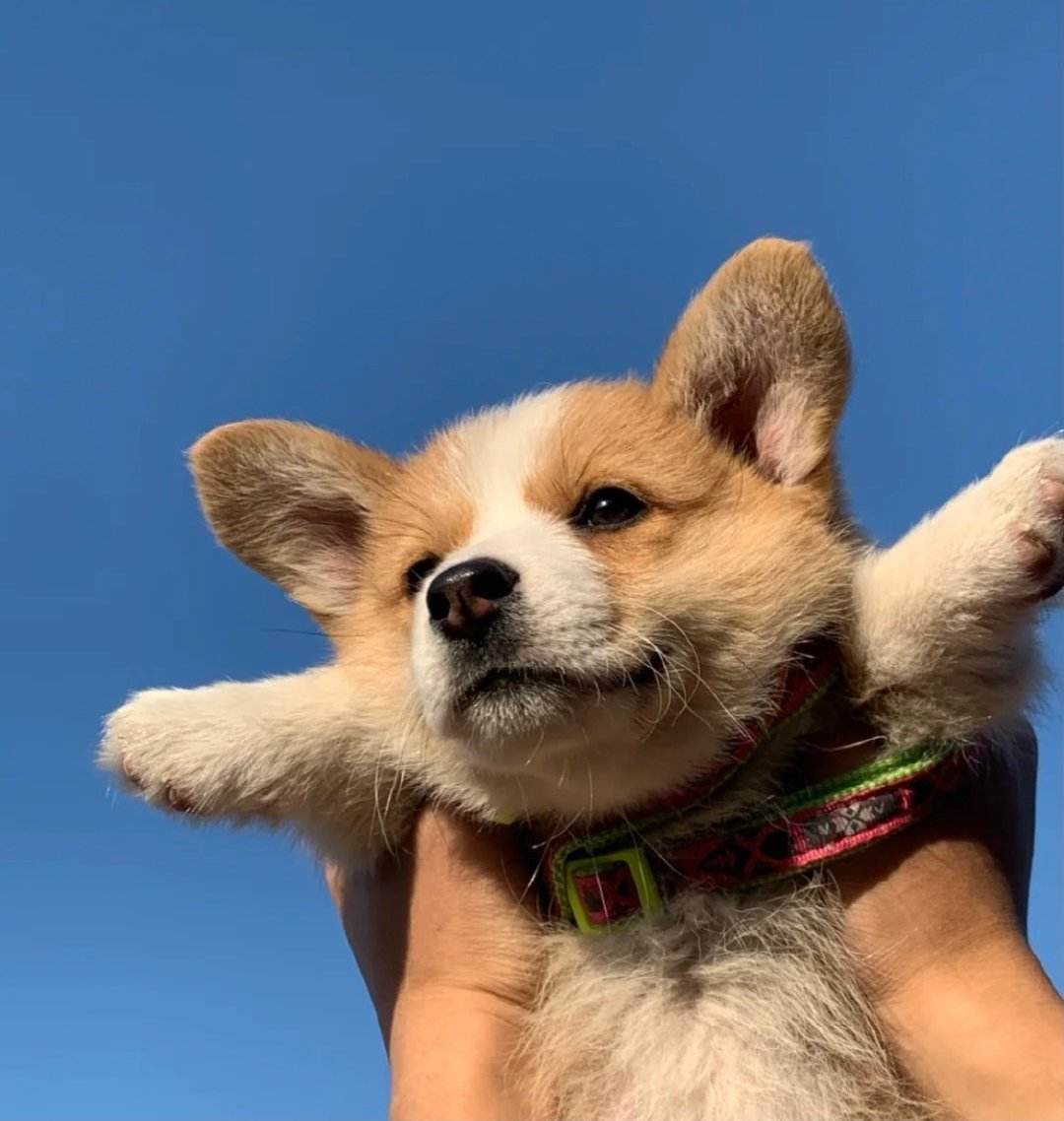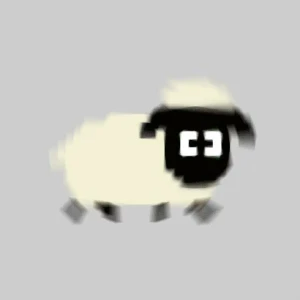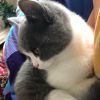 wpBeta
wpBeta-
mouse的复数形式是mice,mouse的音标是英 [maʊs]或美 [maʊs]。
mice
英 [maɪs] 美 [maɪs]
n.老鼠( mouse的名词复数 );鼠标;羞怯[胆小]的人;mouse的复数形式。
例句:
1、The nest contained eight little mice that were naked and blind.
窝里有8只还没长毛、眼睛尚未睁开的小老鼠。
2、The researchers gave 10 mutant mice bone marrow from healthy mice.
研究人员给10只基因突变小鼠植入了健康小鼠的骨髓。

扩展资料:
mouse,rat这两个名词均可表示“老鼠、耗子”之意。辨析如下:
1、mouse一般指体形较小的家鼠。
2、rat一般指生活在室外体形较大的一种老鼠。
mouse的一些词汇搭配:
1、as poor as a church mouse 一贫如洗。
2、as quiet as a mouse 一声不响。
3、as silent as a mouse 静无声息。
4、as still as a mouse 悄无声息。
5、trap for mouse 捕鼠夹。
 苏萦
苏萦-
* 回复内容中包含的链接未经审核,可能存在风险,暂不予完整展示!mice才是错的。。因为mice是老鼠的复数形式,而当mouse特指鼠标时,应该是mouses下面这个链接是我在一下西班牙公司的网站上找到的。你看看网页里面写的是mouses,那么大的一家公司应该不会出现这种常识性错误吧。http://www.l******.com/index.cfm/mice_pointers/&cl=br,pt
 可乐
可乐-
mouse复数mais
 里论外几
里论外几-
Mouse的复数形式:Mice
 gitcloud
gitcloud-
mouse的复数形式是mice
 黑桃云
黑桃云-
mouse——mice
 苏州马小云
苏州马小云-
有两种,翻译成老鼠,复数就是mice,翻译成鼠标复数是mouses
 ardim
ardim-
偶们英语老师说mouse复数是老鼠(mouse)掉进米缸(rice)里,只露出一个头,就是“mice”
楼主选我
 真可
真可-
mouse-----mice
 陶小凡
陶小凡-
究竟结局究竟结局究竟结局究竟结局究竟结局
 皮皮
皮皮-
mice
 马老四
马老四-
mouse(鼠标)的复数是mouses mouse(老鼠)变成复数是mice
 LocCloud
LocCloud-
mice [mais]
 nicehost
nicehost-
是mice [mais]
 阿啵呲嘚
阿啵呲嘚-
mouse(老鼠)变成复数是mice
mouse的复数形式
mouse的复数形式是mice。mouse的意思有①n.老鼠;胆小如鼠的人;鼠标。②v.捕鼠;仔细搜寻;移动鼠标至...之上。 基本字义 n.老鼠;胆小如鼠的人;鼠标。 v.捕鼠;仔细搜寻;移动鼠标至...之上。 习语 play(a game of)cat and mouse with sb play a cat-and-mouse game with sb 和某人玩起猫捉老鼠的游戏;耍弄。 双语例句 1.A little mouse ran under my chair. 一只小老鼠从我的椅子底下跑过。 2.a Mickey Mouse course 无关紧要的课程 3.a Mickey Mouse degree 无足轻重的学位 4.A contoured mouse is shaped to provide a better fit for the keyboarder"s hand. 更适合键盘使用者手形的流线鼠标面世了。 5.Use your mouse to drag the pictures to their new size. 用鼠标把这些图片拖成新的尺寸。2023-01-02 13:40:001
mouse的复数形式是什么?
mouse的复数形式:mice或mouses。读音:英 [maʊs] ;美 [maʊs] n. 鼠标;老鼠;胆小羞怯的人vt. 探出vi. 捕鼠;窥探短语MICKEY MOUSE 米老鼠 ; 米奇老鼠 ; 万能米老鼠 ; 米奇Minnie Mouse 米妮老鼠 ; 米妮 ; 米老鼠 ; 米老鼠米妮Optical mouse 光电鼠标 ; 光学鼠标 ; 光学鼠标器 ; 光学内存同根词词根: mouseadj.mouselike 胆小如鼠的;灰头灰脸的;老鼠的mousey 像老鼠的;多鼠的mousy 胆小如鼠的;灰褐色的;像老鼠的n.mouser 捕鼠动物;爱探听的人;鬼鬼祟祟搜寻的人2023-01-02 13:40:061
mouse的复数是什么?
mouse的复数是mice。mouse英 [maʊs] 美 [maʊs] n. 老鼠;胆小如鼠的人;鼠标v. 捕鼠;仔细搜寻;移动鼠标至......之上The mouse scurried into its hole when the cat appeared.猫一露面,老鼠急忙钻进自己的洞里。近义词vole 英 [vəʊl] 美 [voʊl] n. 田鼠A water vole swam vigorously upstream.一只水鼠奋力向上游游去。2023-01-02 13:40:241
mouse的复数怎么写
mouse不符合一般的名词加复数形式,十亿个特殊的单词,它的复数是mice手工翻译,尊重劳动,欢迎提问,感谢采纳!2023-01-02 13:40:351
mouse的复数形式
mice2023-01-02 13:40:416
mouse button 3什么意思
意思是:鼠标按钮3。重点词汇:mouse英[maʊs]释义:n.老鼠;鼠标;安静害羞的人;浅棕灰色,鼠皮色;<非正式>(尤指眼部或其附近的)青肿。v.(猫,猫头鹰)捕鼠;<非正式>用鼠标在计算机屏幕上移动光标。[复数:mice或mouses;第三人称单数:mouses;现在分词:mousing;过去式:moused;过去分词:moused]短语:MICKEY MOUSE米老鼠;米奇老鼠;万能米老鼠。词语使用变化:mousen.(名词)。1、mouse的意思是“老鼠”“耗子”,指一种较rat小的、尾巴细长的啮齿类动物。用于比喻还可指“胆小如鼠的人”“怕羞的人”。mouse在科技术语中,指电脑上的“鼠标”“光标移动控制盒”。2、mouse的复数形式是mice。2023-01-02 13:41:081
mouse的复数形式是?_?
mice2023-01-02 13:41:196
老鼠的复数形式是什么?
老鼠的单词mouse变成复数是mice。mouse读音:英 [maʊs],美 [maʊs] 释义:n. 老鼠;胆小如鼠的人;鼠标v. 捕鼠;仔细搜寻;移动鼠标至...之上变形:名词复数mice,过去式moused,过去分词moused,现在分词mousing,第三人称单数mouses。词汇搭配:catch mouse 捉老鼠white mouse 白鼠as still as a mouse 悄无声息trap for mouse 捕鼠夹近义词vole读音:英 [vəʊl],美 [vol]释义:n. 大满贯;野鼠vi. 赢得大满贯例句:A water vole swam vigorously upstream.一只水鼠奋力向上游游去。复数:voles词汇搭配:water vole 水鼠field vole 普通田鼠,黑田鼠vole bacillus [医] 野鼠分枝杆菌go the vole 孤注一掷2023-01-02 13:41:411
mouse(鼠标)的复数
mouse(鼠标)的复数是mouses mouse(老鼠)变成复数是mice2023-01-02 13:42:101
mouse的复数是什么
mice2023-01-02 13:42:156
mouse的复数.有两个
mouse(鼠标)的复数是mouses mouse(老鼠)变成复数是mice〔mais〕 新年快乐!2023-01-02 13:42:361
可数名词的变复数规律
总结了名词变复数的规律。仅供参考 Grammar: 名词的数 一、名词分可数名词和不可数名词 1 可数名词 个体名词都是可数名词。每个可数名词都有其单数和复数形式。 A. 单数:表示“一个”的概念。用名词的单数时,名词前需加 a 或 an。如 a book(一本书)、a river(一条河)、an apple(一个苹果)、an orange(一个橘子)等。 B. 复数:表示两个或两个以上的物体。如two pens(两枝钢笔)、three days(三天)、three cities(三个城市)等。 复数形式的构成有两种:规则名词复数形式的构成和不规则名词复数形式的构成。具体见下表。 规则名词复数形式的构成 词形特点 变为复数形式的构成方法 例 词 大多数名词 在词尾加-s。(在清辅音后读[s],在浊辅音及元音后读[z]。) cat——catsbag——bagsday——days 以 s、x、ch、sh 结尾的名词 在词尾加 -es, 读作[iz]。 class——classesmatch——matches 以辅音字母 + y 结尾的名词 把 y 变成 i , 加 -es, 读作[iz] city——cities 但专有名词例外,直接在 y后加-s, 读作[z] Germany——Germanys 以辅音字母 + 结尾的名词 一般直接加 -es , 读作[z]; 某些外来词例外,加 -s (如 zero, kilo, tobacco 等) tomato——tomatoesphoto——photospiano——pianos 以元音字母 + o 结尾的名词 直接加 -s, 但读作[z] zoo——zoosradio——radios 以 f 或 fe 结尾的名词 有的直接加 -s, 读作[z] roof——roofs 大多数要将 f 或 fe 变为 v, 再加-es,读作[z] leaf——leaveswife——wives 不规则名词复数形式的构成 复数形式的构成特点 例词: 通过改变词内元音字母 man——men foot——feettooth——teeth mouse——mice(老鼠) 通过在词尾加-en ox——oxen(牛) child——children 单复数形式相同 a sheep——two sheepa deer——two deer(鹿)a Chinese——two Chinese(中国人) 外来词保持其原有的复数形式 crisis——crises(危机) basis——bases(基础)phenomenon——phenomena(现象) 复合名词复数形式的构成 词的构成特点 变复数的方法 例词: 由若干部分组成并含有一种中心词(指人的词) 将中心词变为复数形式 son-in-law (女婿)——sons-in-lawgrandchild(孙子)——grandchildrenlooker-on (旁观者)——lookers-on 组成部分均为表示人的主体词 各组成部分都要变为复数形式 woman doctor(女医生)——women doctorman servant(男仆)——men servants 组成部分没有中心词 最后一个组成词上加 -s grown-up (成年人)——grown-upsgo-between(中间人)——go-betweens 只有复数形式的名词 词形特点 例词: 由相同两部分组成的物体的名称 scissors(剪刀) trousers(裤子) glasses(眼镜) 以-ing 结尾的名词化的动名词 savings(积蓄) earnings(工资)belongings(所有物) surroundings(周围环境) 已约定俗成的名词形式 arms(武器) stairs(楼梯) thanks(感谢) 只有单数形式的名词 如:advice(意见),labor(劳动),information(信息、消息),furniture(家具),traffic(交通)。 2 不可数名词 表示无法分清个体的名词。不过,有些词在汉语中可数,在英语中却不可数。例如:news(新闻)、furniture(家具)、bread(面包)等。此类不可数名词要表示“一”这个概念时,需用其它方式表达,如 a piece of news,a piece of furniture,a loaf of bread 等。 一般来说,物质名词和抽象名词是不可数的,通常没有复数形式,但有时为了表示“不同类”或“大量”时,可以用复数形式,例如:China is rich in waters. 中国有丰富的水资源 二、可数名词和不可数名词 英语名词按其语法意义分为可数名词和不可数名词,可数名词有单数和复数之分,如bus, boy, child的复数分别为buses, boys, children。不可书名词没有复数形式。如anger, laughter, water等。一般说来,表示物质,材料之类的物质名词和表示状态,行为,品质等抽象概念的抽象名词都是不可数名词,在特殊情况下也可用作可数名词。 三、使用名词单复数应注意的事项 (1)表示不可数名词量的概念,要使用单位名词。 (2) 某些数量词组只能修饰可数名词,如many, few, a number of等 (3)某些数量词组只能修饰不可数名词,如much, little, a little, a great deal of等。 (4)某些数量词语既可以修饰可数名词也可修饰不可数名词。如some, lots of, a lot of等。 (5) 有些名词的复数形式表示特殊的意义,如times 时代,works著作,goods 货物,greens 蔬菜,regards 问候,papers 论文等。 (6)有些名词常用复数形式,如shoes, gloves, savings, findings, trousers等。 (7)表示学科的名词看上去是复数,其意义是单数,如physics, politics, mathematics等。 四、 可数名词变复数 (1) 单数名词加s: students, apples, bags, trees, books, brothers. (2) 以s、x、sh、ch结尾的名词加es: glasses, boxes, brushes, matches. (3) 以辅音字母加y结尾的名词,变y为i加es: cities, babies, enemies. (4) 以f或fe结尾的名词,多数变f为v加es: wives, knives.但有些词只加s: roofs, proof s, (5) 以o结尾的名词,有些加es: Negroes, heroes, tomatoes, potatoes.其它加s: radio s, zoos, pianos, photos. (6) 不规则名词:foot→feet, goose→geese, tooth→teeth, child→children, man→me n, woman→women, sheep→sheep, deer→deer, mouse→mice. (7) 某些外来词变复数:datum→data, medium→media, bacterium→bacteria, curriculum→curricula, criterion→criteria, phenomenon→phenomena. (8) 复合名词变复数:以不可数名词结尾的复合名词无复数形式,如:homework. (9) 以man或woman为前缀的复合名词变复数,前后两个名词都变复数,如:manservant→ menservants, woman student women students. (10) 其它复合名词变复数:grown-up→ grown-ups, brother-in-law→ brothers-in-law, (11) 复合形容词做定语时,其中的名词保持单数:a six-year-old boy,a two-hundred-page book 【例句】1)A second doctor must confirm that these criteria ______ and the death must be re ported to the police department. A) has been met B) have been met C) was met D) was being met criteria是复数形式,故A,C,D都为错误选项。正确答案为B。 2)The university authorities are seriously considering abandoning the traditional ______class. A) fifth minutes B) fifty minutes C) fifty minutes" D) fifty minute"s 复合形容词用作定语时,其中的名词不变复数,故B不对。A不能做定语,D应为fifty minutes",正确答案为C。 英语名词分可数的和不可数两种。可数名词指一般动物和事物,如“Man/ friend/ driver/ student/ dog/ cat/ boat/ egg/ gun/ hand/ head/ lamp/ road/ table/ car ”等等 可数名词有两个数,即单数和复数。单数名词可以和不定冠词“ a/ an”或其他名词限定词(determiners)连用;复数名词可以和数目词,如“many/ a few/ some/ a lot of”等连用。 不可数名词指物质名词(material nouns)和抽象名词( abstract nouns),如:“air/ butter/ grass/ money/ sand/ water/ carefulness/ joy/ peace”等等。不可数名词可以和数量词,如“much/ a little/ little/ a great amount of”等连用。不可数名词只有单数,没有复数“-s”的形式。 有些人对名词数的概念不很清楚,对数目词(expressions of number)和数量词(expressions of quantity)也有些混乱,结果把数目词用在不可数名词之前或随意在不可数名词后面加上复数词尾 “-s”,这些都是语法上的错误。例如: (1) Our workshop has ordered some new equipments from Germany. 虽然有些人把 equipment(配备)当成可数名词,但是它是不可数的,不可有“-s”。 (2) My teacher gave me some sound advices. 应该是“advice”。 (3)Do you have any special informations for me? “Information”才对。 (4)Most furnitures in my house are made of wood. 应该是“furniture...is...” (5)Today, I have many new works to do. 必须是“a lot of new work”才是。 (6)Our foreign students have made great progresses in their studies. “Progress”(进步)不可数;不可有“-es”。 (7)All his money are kept in the bank. “Money”(金钱)属不可数名词;动词要单数的“is”。 上述这类有关不可数名词的错误,极为普遍既然如此,要怎样避免这种错误呢?. 首先,必须牢记不可数名词绝对没有复数形式。其次,随时准备些数量词,如“much/ little/ some/ a little/ a lot of/ plenty of”等,以便在必要时和不可数名词连用。最后,谨记:谓语动词必须和主语的数目一致。既然不可数名词没有复数形式,那么谓语动词若是简单现在时态(simple present tense),现在进行时态( present continuous tense)或现在完成时态(present perfect tense)的话,就必须以单数形式出现。例如: (1) Bread is sold in coffee shops and supermarkets. (2)His luggage is somewhere at the railway station (3)Some money is being used to help the poor. (4)The information required includes personal particulars and the present salary. (5)A lot of time has been spent on this project.2023-01-02 13:42:451
”老鼠”在英语中复数? mouse
mouse(鼠标)的复数是mouses mouse(老鼠)变成复数是mice〔mais〕 Optical Mouse是(光电鼠标)2023-01-02 13:42:501
mouse的复数词?
mouse的复数形式是mice。具体释义如下:mouse英[maʊs]美[maʊs]n.鼠标;老鼠;羞怯[胆小]的人;[非正式用语]眼部青肿vi.捕鼠;窥探,偷偷地寻找名词复数: mice2023-01-02 13:42:561
mouse的英文复数 mouse的复数
mouse 不符合一般的名词加复数形式,十亿个特殊的单词,它的复数是mice 手工翻译,尊重劳动,欢迎提问,感谢采纳!2023-01-02 13:43:011
mouse的复数是什么
老鼠 的时候,复数是mice;鼠标的时候,复数是mouses,或者mice.但很多人倾向用mouses.2023-01-02 13:43:061
老鼠的英文复数是什么?
老鼠的英文复数是mice。老鼠mouse读音:英 [maʊs] 美 [maʊs] 例句:A cat often plays with a mouse before the kill. 猫在咬死老鼠之前常常要耍弄它一番。I held the mouse by its tail. 我抓着耗子的尾巴倒提起来。英语翻译技巧:1、省略翻译法这与最开始提到的增译法相反,就是要求你把不符合汉语,或者英语的表达的方式、思维的习惯或者语言的习惯的部分删去,以免使所翻译出的句子沉杂累赘。2、合并法合并翻译法就是把多个短句子或者简单句合并到一起,形成一个复合句或者说复杂句,多出现在汉译英的题目里出现,比如最后会翻译成定语从句、状语从句、宾语从句等等。2023-01-02 13:43:162
mouse的复数形式是什么?
复数形式:mice英[maɪs]释义:n.老鼠(mouse的复数)n.(Mice)(塞)米采(人名)短语:Of Mice and Men人鼠之间;人与鼠;鼠和人;鼠与人扩展资料:词语辨析:mouse,rat这两个名词均可表示“老鼠、耗子”之意。1、mouse一般指体形较小的家鼠。2、rat一般指生活在室外体形较大的一种老鼠。词源解说:直接源自古英语的mus;最初源自希腊语的mus,意为鼠。2023-01-02 13:44:421
“mouse”的复数是什么?
2020-01-01 1953232023-01-02 13:44:566
mouse的复数是什么?
mouse 的名词复数为mice。具体释义如下:mouse 英 [maʊs] 美 [maʊs] n. 老鼠;胆小如鼠的人;鼠标v. 捕鼠;仔细搜寻;移动鼠标至...之上mouse的意思是“老鼠”“耗子”,指一种较rat小的、尾巴细长的啮齿类动物。用于比喻还可指“胆小如鼠的人”“怕羞的人”。mouse在科技术语中,指电脑上的“鼠标”“光标移动控制盒”。mouse的复数形式是mice。扩展资料一、近义词区分1、mouse, ratrat指“田鼠”;mouse指“家鼠”,一般比rat小。2、mouse,rat这两个名词均可表示“老鼠、耗子”之意。mouse一般指体形较小的家鼠。rat一般指生活在室外体形较大的一种老鼠。二、常用词汇1、动词+~catch mouse 捉老鼠2、形容词+~white mouse 白鼠3、名词+~field mouse 田鼠house mouse 家鼠meadow mouse 田鼠4、介词+~as poor as a church mouse 一贫如洗as quiet as a mouse 一声不响2023-01-02 13:45:231
mouse的复数怎么写?
mouse 的名词复数为mice。具体释义如下:mouse 英 [maʊs] 美 [maʊs] n. 老鼠;胆小如鼠的人;鼠标v. 捕鼠;仔细搜寻;移动鼠标至...之上mouse的意思是“老鼠”“耗子”,指一种较rat小的、尾巴细长的啮齿类动物。用于比喻还可指“胆小如鼠的人”“怕羞的人”。mouse在科技术语中,指电脑上的“鼠标”“光标移动控制盒”。mouse的复数形式是mice。扩展资料一、近义词区分1、mouse, ratrat指“田鼠”;mouse指“家鼠”,一般比rat小。2、mouse,rat这两个名词均可表示“老鼠、耗子”之意。mouse一般指体形较小的家鼠。rat一般指生活在室外体形较大的一种老鼠。二、常用词汇1、动词+~catch mouse 捉老鼠2、形容词+~white mouse 白鼠3、名词+~field mouse 田鼠house mouse 家鼠meadow mouse 田鼠4、介词+~as poor as a church mouse 一贫如洗as quiet as a mouse 一声不响2023-01-02 13:45:372
鼠标复数怎么写?
鼠标英文是mouse。英语中老鼠mosee的复数是mice那么鼠标的复数是mice。鼠标:一种手用的、用按扭控制的输入设备,当在平台上滑动时可以相应地移动计算机屏幕上的指示箭头,使得操作者可以随意控制指示箭头,由此来选择项目、控制内容或作图。鼠标(Mouse)是一种很常见及常用的电脑输入设备,它可以对当前屏幕上的游标进行定位,并通过按键和滚轮装置对游标所经过位置的屏幕元素进行操作。鼠标的鼻祖于1968年出现,美国科学家道格拉斯·恩格尔巴特(Douglas Englebart)在加利福尼亚制作了第一只鼠标,因形似老鼠而得名,“鼠标”的标准称呼应该是“鼠标器”,鼠标的使用是为了使计算机的操作更加简便,来代替键盘繁琐的指令。2023-01-02 13:45:491
mouse的复数是什么?
mouse 的名词复数为mice。具体释义如下:mouse 英 [maʊs] 美 [maʊs] n. 老鼠;胆小如鼠的人;鼠标v. 捕鼠;仔细搜寻;移动鼠标至...之上mouse的意思是“老鼠”“耗子”,指一种较rat小的、尾巴细长的啮齿类动物。用于比喻还可指“胆小如鼠的人”“怕羞的人”。mouse在科技术语中,指电脑上的“鼠标”“光标移动控制盒”。mouse的复数形式是mice。扩展资料一、近义词区分1、mouse, ratrat指“田鼠”;mouse指“家鼠”,一般比rat小。2、mouse,rat这两个名词均可表示“老鼠、耗子”之意。mouse一般指体形较小的家鼠。rat一般指生活在室外体形较大的一种老鼠。二、常用词汇1、动词+~catch mouse 捉老鼠2、形容词+~white mouse 白鼠3、名词+~field mouse 田鼠house mouse 家鼠meadow mouse 田鼠4、介词+~as poor as a church mouse 一贫如洗as quiet as a mouse 一声不响2023-01-02 13:45:561
mouse的复数英语是什么?
mouse 的名词复数为mice。具体释义如下:mouse 英 [maʊs] 美 [maʊs] n. 老鼠;胆小如鼠的人;鼠标v. 捕鼠;仔细搜寻;移动鼠标至...之上mouse的意思是“老鼠”“耗子”,指一种较rat小的、尾巴细长的啮齿类动物。用于比喻还可指“胆小如鼠的人”“怕羞的人”。mouse在科技术语中,指电脑上的“鼠标”“光标移动控制盒”。mouse的复数形式是mice。扩展资料一、近义词区分1、mouse, ratrat指“田鼠”;mouse指“家鼠”,一般比rat小。2、mouse,rat这两个名词均可表示“老鼠、耗子”之意。mouse一般指体形较小的家鼠。rat一般指生活在室外体形较大的一种老鼠。二、常用词汇1、动词+~catch mouse 捉老鼠2、形容词+~white mouse 白鼠3、名词+~field mouse 田鼠house mouse 家鼠meadow mouse 田鼠4、介词+~as poor as a church mouse 一贫如洗as quiet as a mouse 一声不响2023-01-02 13:46:051
英语单词的复数形式怎么变?
英语名词单数变复数的规则 1)单数名词加s: students, apples, bags, trees, books, brothers. 2)以s、x、sh、ch结尾的名词加es: glasses, boxes, brushes, matches. 3)以辅音字母加y结尾的名词,变y为i加es: cities, babies, enemies. 4)以f或fe结尾的名词,多数变f为v加es: wives, knives.但有些词只加s: roofs, proof s, chiefs. 5)以o结尾的名词,有些加es: Negroes, heroes, tomatoes, potatoes.其它加s: radio s, zoos, pianos, photos. 6)不规则名词:foot→feet, goose→geese, tooth→teeth, child→children, man→me n, woman→women, sheep→sheep, deer→deer, mouse→mice. 7)某些外来词变复数:datum→data, medium→media, bacterium→bacteria, curriculum→curricula, criterion→criteria, phenomenon→phenomena. ( um/ on→a) analysis→analyses, basis→bases, crisis→crises, diagnosis→diagnoses.( is→es ) 8)复合名词变复数:以不可数名词结尾的复合名词无复数形式,如:homework. 以man或woman为前缀的复合名词变复数,前后两个名词都变复数,如:manservant→menservants, woman student women students. 其它复合名词变复数:grown up→grown ups, brother in law→brothers in law, stand by→stands by.9)复合形容词做定语时,其中的名词保持单数:a six?year?old boy,a two?hundred?page book名词复数:)~~ 英语中名词可分为可数名词和不可数名词。可数名词在应用时有单数和复数形式。表示一个用单数,表示两个或两个以上用复数。复数名词的构成分为规则变化和不规则变化。 1.规则变化: 1) 一般在名词词尾加s, ① map—maps地图,bird—birds鸟, orange—oranges 桔子, bike—bikes自行车; 2) 以s, x, ch, sh结尾的名词加es, ① box—boxes盒子,class—classes班级,watch—watches手表, dish-dishes盘,碟子,餐具; 3) 以O结尾的名词后面加s或es ① photo—photos相片 radio—radios收音机 zoo—zoos动物园 tomato—tomatoes西红柿 potato—potatoes土豆 4) 以辅音字母加y结尾的名词,变y为i+es ① baby—babies婴儿 family—families家庭; 以元音字母加y结尾的名词直接加s ① boy—boys男孩 toy—toys 玩具; 5) 以fe或f结尾的名词,把fe或f变为ves ① knife—knives小刀 wife—wives妻子 leaf—leaves树叶。 二:名词复数的不规则变化 1)child---children foot---feet tooth---teeth mouse---mice man---men woman---women 注意:与 man 和 woman构成的合成词,其复数形式也是 -men 和-women。 如: an Englishman,two Englishmen. 但German不是合成词,故复数形式为Germans;Bowman是姓,其复数是the Bowmans。 2)单复同形 如: deer,sheep,fish,Chinese,Japanese li,jin,yuan,two li,three mu,four jin 但除人民币元、角、分外,美元、英镑、法郎等都有复数形式。如: a dollar, two dollars; a meter, two meters 3)集体名词,以单数形式出现,但实为复数。 如: people police cattle 等本身就是复数,不能说 a people,a police,a cattle,但可以说 a person,a policeman,a head of cattle,the English,the British,the French,the Chinese,the Japanese,the Swiss 等名词,表示国民总称时,作复数用。 如: The Chinese are industries and brave. 中国人民是勤劳勇敢的。 4)以s结尾,仍为单数的名词,如: a. maths,politics,physics等学科名词,为不可数名词,是单数。 b. news 是不可数名词。 c. the United States,the United Nations 应视为单数。 The United Nations was organized in 1945. 联合国是1945年组建起来的。 d. 以复数形式出现的书名,剧名,报纸,杂志名,也可视为单数。 "The Arabian Nights" is a very interesting story-book. <<一千零一夜>>是一本非常有趣的故事书。 5) 表示由两部分构成的东西,如:glasses (眼镜) trousers, clothes 若表达具体数目,要借助数量词 pair(对,双); suit(套); a pair of glasses; two pairs of trousers 6) 另外还有一些名词,其复数形式有时可表示特别意思,如:goods货物,waters水域,fishes(各种)鱼2023-01-02 13:46:191
mouse变复数
mouse复数是mice. mouse:n.老鼠;耗子;鼠标。 mice:mouse 的复数。 扩展资料 The nest contained eight little mice that were naked and blind. 窝里有8只还没长毛、眼睛尚未睁开的小老鼠。 The Hotel has been ordered to close because it is overrun by mice and rats 由于老鼠泛滥成灾,该旅馆被勒令关闭。 "Any holes in the kitchen where the mice are getting through?" – "I"ve blocked them up." “厨房里还有没有老鼠洞?”——“我已经把它们堵死了。” Those two little mice were naked and blind. 那两只小老鼠还没长毛,眼睛也尚未睁开。 The cat catches mice. 猫捉老鼠。2023-01-02 13:46:261
音标/mais/英文单词是什么
mice英 [maɪs] 美 [maɪs] n. 老鼠(mouse的复数)n. (Mice)人名;(塞)米采短语transgenic mice 转基因小鼠 ; 转基因鼠 ; 小鼠 ; 培养出转基因小鼠knockout mice 基因剔除小鼠 ; 剔除小鼠扩展资料近义词:mouse读音:英 [maʊs] 美 [maʊs]n. 老鼠;胆小如鼠的人;鼠标v. 捕鼠;仔细搜寻词汇搭配:1、动词+~:catch mouse 捉老鼠2、形容词+~:white mouse 白鼠常见句型The mice have bored a hole in the wall.老鼠在墙上打了个洞。2023-01-02 13:46:326
可数名词复数怎么变,有规律吗?
总结了名词变复数的规律。仅供参考 Grammar: 名词的数 一、名词分可数名词和不可数名词 1 可数名词 个体名词都是可数名词。每个可数名词都有其单数和复数形式。 A. 单数:表示“一个”的概念。用名词的单数时,名词前需加 a 或 an。如 a book(一本书)、a river(一条河)、an apple(一个苹果)、an orange(一个橘子)等。 B. 复数:表示两个或两个以上的物体。如two pens(两枝钢笔)、three days(三天)、three cities(三个城市)等。 复数形式的构成有两种:规则名词复数形式的构成和不规则名词复数形式的构成。具体见下表。 规则名词复数形式的构成 词形特点 变为复数形式的构成方法 例 词 大多数名词 在词尾加-s。(在清辅音后读[s],在浊辅音及元音后读[z]。) cat——catsbag——bagsday——days 以 s、x、ch、sh 结尾的名词 在词尾加 -es, 读作[iz]。 class——classesmatch——matches 以辅音字母 + y 结尾的名词 把 y 变成 i , 加 -es, 读作[iz] city——cities 但专有名词例外,直接在 y后加-s, 读作[z] Germany——Germanys 以辅音字母 + 结尾的名词 一般直接加 -es , 读作[z]; 某些外来词例外,加 -s (如 zero, kilo, tobacco 等) tomato——tomatoesphoto——photospiano——pianos 以元音字母 + o 结尾的名词 直接加 -s, 但读作[z] zoo——zoosradio——radios 以 f 或 fe 结尾的名词 有的直接加 -s, 读作[z] roof——roofs 大多数要将 f 或 fe 变为 v, 再加-es,读作[z] leaf——leaveswife——wives 不规则名词复数形式的构成 复数形式的构成特点 例词: 通过改变词内元音字母 man——men foot——feettooth——teeth mouse——mice(老鼠) 通过在词尾加-en ox——oxen(牛) child——children 单复数形式相同 a sheep——two sheepa deer——two deer(鹿)a Chinese——two Chinese(中国人) 外来词保持其原有的复数形式 crisis——crises(危机) basis——bases(基础)phenomenon——phenomena(现象) 复合名词复数形式的构成 词的构成特点 变复数的方法 例词: 由若干部分组成并含有一种中心词(指人的词) 将中心词变为复数形式 son-in-law (女婿)——sons-in-lawgrandchild(孙子)——grandchildrenlooker-on (旁观者)——lookers-on 组成部分均为表示人的主体词 各组成部分都要变为复数形式 woman doctor(女医生)——women doctorman servant(男仆)——men servants 组成部分没有中心词 最后一个组成词上加 -s grown-up (成年人)——grown-upsgo-between(中间人)——go-betweens 只有复数形式的名词 词形特点 例词: 由相同两部分组成的物体的名称 scissors(剪刀) trousers(裤子) glasses(眼镜) 以-ing 结尾的名词化的动名词 savings(积蓄) earnings(工资)belongings(所有物) surroundings(周围环境) 已约定俗成的名词形式 arms(武器) stairs(楼梯) thanks(感谢) 只有单数形式的名词 如:advice(意见),labor(劳动),information(信息、消息),furniture(家具),traffic(交通)。 2 不可数名词 表示无法分清个体的名词。不过,有些词在汉语中可数,在英语中却不可数。例如:news(新闻)、furniture(家具)、bread(面包)等。此类不可数名词要表示“一”这个概念时,需用其它方式表达,如 a piece of news,a piece of furniture,a loaf of bread 等。 一般来说,物质名词和抽象名词是不可数的,通常没有复数形式,但有时为了表示“不同类”或“大量”时,可以用复数形式,例如:China is rich in waters. 中国有丰富的水资源 二、可数名词和不可数名词 英语名词按其语法意义分为可数名词和不可数名词,可数名词有单数和复数之分,如bus, boy, child的复数分别为buses, boys, children。不可书名词没有复数形式。如anger, laughter, water等。一般说来,表示物质,材料之类的物质名词和表示状态,行为,品质等抽象概念的抽象名词都是不可数名词,在特殊情况下也可用作可数名词。 三、使用名词单复数应注意的事项 (1)表示不可数名词量的概念,要使用单位名词。 (2) 某些数量词组只能修饰可数名词,如many, few, a number of等 (3)某些数量词组只能修饰不可数名词,如much, little, a little, a great deal of等。 (4)某些数量词语既可以修饰可数名词也可修饰不可数名词。如some, lots of, a lot of等。 (5) 有些名词的复数形式表示特殊的意义,如times 时代,works著作,goods 货物,greens 蔬菜,regards 问候,papers 论文等。 (6)有些名词常用复数形式,如shoes, gloves, savings, findings, trousers等。 (7)表示学科的名词看上去是复数,其意义是单数,如physics, politics, mathematics等。 四、 可数名词变复数 (1) 单数名词加s: students, apples, bags, trees, books, brothers. (2) 以s、x、sh、ch结尾的名词加es: glasses, boxes, brushes, matches. (3) 以辅音字母加y结尾的名词,变y为i加es: cities, babies, enemies. (4) 以f或fe结尾的名词,多数变f为v加es: wives, knives.但有些词只加s: roofs, proof s, (5) 以o结尾的名词,有些加es: Negroes, heroes, tomatoes, potatoes.其它加s: radio s, zoos, pianos, photos. (6) 不规则名词:foot→feet, goose→geese, tooth→teeth, child→children, man→me n, woman→women, sheep→sheep, deer→deer, mouse→mice. (7) 某些外来词变复数:datum→data, medium→media, bacterium→bacteria, curriculum→curricula, criterion→criteria, phenomenon→phenomena. (8) 复合名词变复数:以不可数名词结尾的复合名词无复数形式,如:homework. (9) 以man或woman为前缀的复合名词变复数,前后两个名词都变复数,如:manservant→ menservants, woman student women students. (10) 其它复合名词变复数:grown-up→ grown-ups, brother-in-law→ brothers-in-law, (11) 复合形容词做定语时,其中的名词保持单数:a six-year-old boy,a two-hundred-page book 【例句】1)A second doctor must confirm that these criteria ______ and the death must be re ported to the police department. A) has been met B) have been met C) was met D) was being met criteria是复数形式,故A,C,D都为错误选项。正确答案为B。 2)The university authorities are seriously considering abandoning the traditional ______class. A) fifth minutes B) fifty minutes C) fifty minutes" D) fifty minute"s 复合形容词用作定语时,其中的名词不变复数,故B不对。A不能做定语,D应为fifty minutes",正确答案为C。 英语名词分可数的和不可数两种。可数名词指一般动物和事物,如“Man/ friend/ driver/ student/ dog/ cat/ boat/ egg/ gun/ hand/ head/ lamp/ road/ table/ car ”等等 可数名词有两个数,即单数和复数。单数名词可以和不定冠词“ a/ an”或其他名词限定词(determiners)连用;复数名词可以和数目词,如“many/ a few/ some/ a lot of”等连用。 不可数名词指物质名词(material nouns)和抽象名词( abstract nouns),如:“air/ butter/ grass/ money/ sand/ water/ carefulness/ joy/ peace”等等。不可数名词可以和数量词,如“much/ a little/ little/ a great amount of”等连用。不可数名词只有单数,没有复数“-s”的形式。 有些人对名词数的概念不很清楚,对数目词(expressions of number)和数量词(expressions of quantity)也有些混乱,结果把数目词用在不可数名词之前或随意在不可数名词后面加上复数词尾 “-s”,这些都是语法上的错误。例如: (1) Our workshop has ordered some new equipments from Germany. 虽然有些人把 equipment(配备)当成可数名词,但是它是不可数的,不可有“-s”。 (2) My teacher gave me some sound advices. 应该是“advice”。 (3)Do you have any special informations for me? “Information”才对。 (4)Most furnitures in my house are made of wood. 应该是“furniture...is...” (5)Today, I have many new works to do. 必须是“a lot of new work”才是。 (6)Our foreign students have made great progresses in their studies. “Progress”(进步)不可数;不可有“-es”。 (7)All his money are kept in the bank. “Money”(金钱)属不可数名词;动词要单数的“is”。 上述这类有关不可数名词的错误,极为普遍既然如此,要怎样避免这种错误呢?. 首先,必须牢记不可数名词绝对没有复数形式。其次,随时准备些数量词,如“much/ little/ some/ a little/ a lot of/ plenty of”等,以便在必要时和不可数名词连用。最后,谨记:谓语动词必须和主语的数目一致。既然不可数名词没有复数形式,那么谓语动词若是简单现在时态(simple present tense),现在进行时态( present continuous tense)或现在完成时态(present perfect tense)的话,就必须以单数形式出现。例如: (1) Bread is sold in coffee shops and supermarkets. (2)His luggage is somewhere at the railway station (3)Some money is being used to help the poor. (4)The information required includes personal particulars and the present salary. (5)A lot of time has been spent on this project.2023-01-02 13:47:141
mouse的英文复数
mouse不符合一般的名词加复数形式,十亿个特殊的单词,它的复数是mice手工翻译,尊重劳动,欢迎提问,感谢采纳!2023-01-02 13:47:211
good反义词___ sad反义词___ mouse复数形式___ chase(-ing形式)__
1bad2023-01-02 13:47:274
可数名词怎么变复数?
英语名词单数变复数的规则 1)单数名词加s: students, apples, bags, trees, books, brothers. 2)以s、x、sh、ch结尾的名词加es: glasses, boxes, brushes, matches. 3)以辅音字母加y结尾的名词,变y为i加es: cities, babies, enemies. 4)以f或fe结尾的名词,多数变f为v加es: wives, knives.但有些词只加s: roofs, proof s, chiefs. 5)以o结尾的名词,有些加es: Negroes, heroes, tomatoes, potatoes.其它加s: radio s, zoos, pianos, photos. 6)不规则名词:foot→feet, goose→geese, tooth→teeth, child→children, man→me n, woman→women, sheep→sheep, deer→deer, mouse→mice. 7)某些外来词变复数:datum→data, medium→media, bacterium→bacteria, curriculum→curricula, criterion→criteria, phenomenon→phenomena. ( um/ on→a) analysis→analyses, basis→bases, crisis→crises, diagnosis→diagnoses.( is→es ) 8)复合名词变复数:以不可数名词结尾的复合名词无复数形式,如:homework. 以man或woman为前缀的复合名词变复数,前后两个名词都变复数,如:manservant→menservants, woman student women students. 其它复合名词变复数:grown up→grown ups, brother in law→brothers in law, stand by→stands by.9)复合形容词做定语时,其中的名词保持单数:a six?year?old boy,a two?hundred?page book名词复数:)~~ 英语中名词可分为可数名词和不可数名词。可数名词在应用时有单数和复数形式。表示一个用单数,表示两个或两个以上用复数。复数名词的构成分为规则变化和不规则变化。 1.规则变化: 1) 一般在名词词尾加s, ① map—maps地图,bird—birds鸟, orange—oranges 桔子, bike—bikes自行车; 2) 以s, x, ch, sh结尾的名词加es, ① box—boxes盒子,class—classes班级,watch—watches手表, dish-dishes盘,碟子,餐具; 3) 以O结尾的名词后面加s或es ① photo—photos相片 radio—radios收音机 zoo—zoos动物园 tomato—tomatoes西红柿 potato—potatoes土豆 4) 以辅音字母加y结尾的名词,变y为i+es ① baby—babies婴儿 family—families家庭; 以元音字母加y结尾的名词直接加s ① boy—boys男孩 toy—toys 玩具; 5) 以fe或f结尾的名词,把fe或f变为ves ① knife—knives小刀 wife—wives妻子 leaf—leaves树叶。 二:名词复数的不规则变化 1)child---children foot---feet tooth---teeth mouse---mice man---men woman---women 注意:与 man 和 woman构成的合成词,其复数形式也是 -men 和-women。 如: an Englishman,two Englishmen. 但German不是合成词,故复数形式为Germans;Bowman是姓,其复数是the Bowmans。 2)单复同形 如: deer,sheep,fish,Chinese,Japanese li,jin,yuan,two li,three mu,four jin 但除人民币元、角、分外,美元、英镑、法郎等都有复数形式。如: a dollar, two dollars; a meter, two meters 3)集体名词,以单数形式出现,但实为复数。 如: people police cattle 等本身就是复数,不能说 a people,a police,a cattle,但可以说 a person,a policeman,a head of cattle,the English,the British,the French,the Chinese,the Japanese,the Swiss 等名词,表示国民总称时,作复数用。 如: The Chinese are industries and brave. 中国人民是勤劳勇敢的。 4)以s结尾,仍为单数的名词,如: a. maths,politics,physics等学科名词,为不可数名词,是单数。 b. news 是不可数名词。 c. the United States,the United Nations 应视为单数。 The United Nations was organized in 1945. 联合国是1945年组建起来的。 d. 以复数形式出现的书名,剧名,报纸,杂志名,也可视为单数。 "The Arabian Nights" is a very interesting story-book. <<一千零一夜>>是一本非常有趣的故事书。 5) 表示由两部分构成的东西,如:glasses (眼镜) trousers, clothes 若表达具体数目,要借助数量词 pair(对,双); suit(套); a pair of glasses; two pairs of trousers 6) 另外还有一些名词,其复数形式有时可表示特别意思,如:goods货物,waters水域,fishes(各种)鱼2023-01-02 13:47:431
mouse的复数是什么
mouse的复数micemicen. 老鼠(mouse的复数)采纳吧~亲~2023-01-02 13:47:496
close的现在分词( ) mouse的复数(
closing mice sad2023-01-02 13:48:274
名词变复数有哪些规律?有没有例子呀?
总结了名词变复数的规律。仅供参考 Grammar: 名词的数 一、名词分可数名词和不可数名词 1 可数名词 个体名词都是可数名词。每个可数名词都有其单数和复数形式。 A. 单数:表示“一个”的概念。用名词的单数时,名词前需加 a 或 an。如 a book(一本书)、a river(一条河)、an apple(一个苹果)、an orange(一个橘子)等。 B. 复数:表示两个或两个以上的物体。如two pens(两枝钢笔)、three days(三天)、three cities(三个城市)等。 复数形式的构成有两种:规则名词复数形式的构成和不规则名词复数形式的构成。具体见下表。 规则名词复数形式的构成 词形特点 变为复数形式的构成方法 例 词 大多数名词 在词尾加-s。(在清辅音后读[s],在浊辅音及元音后读[z]。) cat——catsbag——bagsday——days 以 s、x、ch、sh 结尾的名词 在词尾加 -es, 读作[iz]。 class——classesmatch——matches 以辅音字母 + y 结尾的名词 把 y 变成 i , 加 -es, 读作[iz] city——cities 但专有名词例外,直接在 y后加-s, 读作[z] Germany——Germanys 以辅音字母 + 结尾的名词 一般直接加 -es , 读作[z]; 某些外来词例外,加 -s (如 zero, kilo, tobacco 等) tomato——tomatoesphoto——photospiano——pianos 以元音字母 + o 结尾的名词 直接加 -s, 但读作[z] zoo——zoosradio——radios 以 f 或 fe 结尾的名词 有的直接加 -s, 读作[z] roof——roofs 大多数要将 f 或 fe 变为 v, 再加-es,读作[z] leaf——leaveswife——wives 不规则名词复数形式的构成 复数形式的构成特点 例词: 通过改变词内元音字母 man——men foot——feettooth——teeth mouse——mice(老鼠) 通过在词尾加-en ox——oxen(牛) child——children 单复数形式相同 a sheep——two sheepa deer——two deer(鹿)a Chinese——two Chinese(中国人) 外来词保持其原有的复数形式 crisis——crises(危机) basis——bases(基础)phenomenon——phenomena(现象) 复合名词复数形式的构成 词的构成特点 变复数的方法 例词: 由若干部分组成并含有一种中心词(指人的词) 将中心词变为复数形式 son-in-law (女婿)——sons-in-lawgrandchild(孙子)——grandchildrenlooker-on (旁观者)——lookers-on 组成部分均为表示人的主体词 各组成部分都要变为复数形式 woman doctor(女医生)——women doctorman servant(男仆)——men servants 组成部分没有中心词 最后一个组成词上加 -s grown-up (成年人)——grown-upsgo-between(中间人)——go-betweens 只有复数形式的名词 词形特点 例词: 由相同两部分组成的物体的名称 scissors(剪刀) trousers(裤子) glasses(眼镜) 以-ing 结尾的名词化的动名词 savings(积蓄) earnings(工资)belongings(所有物) surroundings(周围环境) 已约定俗成的名词形式 arms(武器) stairs(楼梯) thanks(感谢) 只有单数形式的名词 如:advice(意见),labor(劳动),information(信息、消息),furniture(家具),traffic(交通)。 2 不可数名词 表示无法分清个体的名词。不过,有些词在汉语中可数,在英语中却不可数。例如:news(新闻)、furniture(家具)、bread(面包)等。此类不可数名词要表示“一”这个概念时,需用其它方式表达,如 a piece of news,a piece of furniture,a loaf of bread 等。 一般来说,物质名词和抽象名词是不可数的,通常没有复数形式,但有时为了表示“不同类”或“大量”时,可以用复数形式,例如:China is rich in waters. 中国有丰富的水资源 二、可数名词和不可数名词 英语名词按其语法意义分为可数名词和不可数名词,可数名词有单数和复数之分,如bus, boy, child的复数分别为buses, boys, children。不可书名词没有复数形式。如anger, laughter, water等。一般说来,表示物质,材料之类的物质名词和表示状态,行为,品质等抽象概念的抽象名词都是不可数名词,在特殊情况下也可用作可数名词。 三、使用名词单复数应注意的事项 (1)表示不可数名词量的概念,要使用单位名词。 (2) 某些数量词组只能修饰可数名词,如many, few, a number of等 (3)某些数量词组只能修饰不可数名词,如much, little, a little, a great deal of等。 (4)某些数量词语既可以修饰可数名词也可修饰不可数名词。如some, lots of, a lot of等。 (5) 有些名词的复数形式表示特殊的意义,如times 时代,works著作,goods 货物,greens 蔬菜,regards 问候,papers 论文等。 (6)有些名词常用复数形式,如shoes, gloves, savings, findings, trousers等。 (7)表示学科的名词看上去是复数,其意义是单数,如physics, politics, mathematics等。 四、 可数名词变复数 (1) 单数名词加s: students, apples, bags, trees, books, brothers. (2) 以s、x、sh、ch结尾的名词加es: glasses, boxes, brushes, matches. (3) 以辅音字母加y结尾的名词,变y为i加es: cities, babies, enemies. (4) 以f或fe结尾的名词,多数变f为v加es: wives, knives.但有些词只加s: roofs, proof s, (5) 以o结尾的名词,有些加es: Negroes, heroes, tomatoes, potatoes.其它加s: radio s, zoos, pianos, photos. (6) 不规则名词:foot→feet, goose→geese, tooth→teeth, child→children, man→me n, woman→women, sheep→sheep, deer→deer, mouse→mice. (7) 某些外来词变复数:datum→data, medium→media, bacterium→bacteria, curriculum→curricula, criterion→criteria, phenomenon→phenomena. (8) 复合名词变复数:以不可数名词结尾的复合名词无复数形式,如:homework. (9) 以man或woman为前缀的复合名词变复数,前后两个名词都变复数,如:manservant→ menservants, woman student women students. (10) 其它复合名词变复数:grown-up→ grown-ups, brother-in-law→ brothers-in-law, (11) 复合形容词做定语时,其中的名词保持单数:a six-year-old boy,a two-hundred-page book 【例句】1)A second doctor must confirm that these criteria ______ and the death must be re ported to the police department. A) has been met B) have been met C) was met D) was being met criteria是复数形式,故A,C,D都为错误选项。正确答案为B。 2)The university authorities are seriously considering abandoning the traditional ______class. A) fifth minutes B) fifty minutes C) fifty minutes" D) fifty minute"s 复合形容词用作定语时,其中的名词不变复数,故B不对。A不能做定语,D应为fifty minutes",正确答案为C。 英语名词分可数的和不可数两种。可数名词指一般动物和事物,如“Man/ friend/ driver/ student/ dog/ cat/ boat/ egg/ gun/ hand/ head/ lamp/ road/ table/ car ”等等 可数名词有两个数,即单数和复数。单数名词可以和不定冠词“ a/ an”或其他名词限定词(determiners)连用;复数名词可以和数目词,如“many/ a few/ some/ a lot of”等连用。 不可数名词指物质名词(material nouns)和抽象名词( abstract nouns),如:“air/ butter/ grass/ money/ sand/ water/ carefulness/ joy/ peace”等等。不可数名词可以和数量词,如“much/ a little/ little/ a great amount of”等连用。不可数名词只有单数,没有复数“-s”的形式。 有些人对名词数的概念不很清楚,对数目词(expressions of number)和数量词(expressions of quantity)也有些混乱,结果把数目词用在不可数名词之前或随意在不可数名词后面加上复数词尾 “-s”,这些都是语法上的错误。例如: (1) Our workshop has ordered some new equipments from Germany. 虽然有些人把 equipment(配备)当成可数名词,但是它是不可数的,不可有“-s”。 (2) My teacher gave me some sound advices. 应该是“advice”。 (3)Do you have any special informations for me? “Information”才对。 (4)Most furnitures in my house are made of wood. 应该是“furniture...is...” (5)Today, I have many new works to do. 必须是“a lot of new work”才是。 (6)Our foreign students have made great progresses in their studies. “Progress”(进步)不可数;不可有“-es”。 (7)All his money are kept in the bank. “Money”(金钱)属不可数名词;动词要单数的“is”。 上述这类有关不可数名词的错误,极为普遍既然如此,要怎样避免这种错误呢?. 首先,必须牢记不可数名词绝对没有复数形式。其次,随时准备些数量词,如“much/ little/ some/ a little/ a lot of/ plenty of”等,以便在必要时和不可数名词连用。最后,谨记:谓语动词必须和主语的数目一致。既然不可数名词没有复数形式,那么谓语动词若是简单现在时态(simple present tense),现在进行时态( present continuous tense)或现在完成时态(present perfect tense)的话,就必须以单数形式出现。例如: (1) Bread is sold in coffee shops and supermarkets. (2)His luggage is somewhere at the railway station (3)Some money is being used to help the poor. (4)The information required includes personal particulars and the present salary. (5)A lot of time has been spent on this project.2023-01-02 13:48:441
MOUSE 的英文复数怎么表示?
mouse(鼠标)的复数是mouses mouse (老鼠)变成复数是mice〔mais)2023-01-02 13:48:581
请问mouse(老鼠)的复数 怎么拼?
mice太简单了~2023-01-02 13:49:182
pretty反义词―― baby复数形式―― mouse复数形式――
uglybabiesmice2023-01-02 13:49:304
名词变复数是怎么变得?
英语名词单数变复数的规则 1)单数名词加s: students, apples, bags, trees, books, brothers. 2)以s、x、sh、ch结尾的名词加es: glasses, boxes, brushes, matches. 3)以辅音字母加y结尾的名词,变y为i加es: cities, babies, enemies. 4)以f或fe结尾的名词,多数变f为v加es: wives, knives.但有些词只加s: roofs, proof s, chiefs. 5)以o结尾的名词,有些加es: Negroes, heroes, tomatoes, potatoes.其它加s: radio s, zoos, pianos, photos. 6)不规则名词:foot→feet, goose→geese, tooth→teeth, child→children, man→me n, woman→women, sheep→sheep, deer→deer, mouse→mice. 7)某些外来词变复数:datum→data, medium→media, bacterium→bacteria, curriculum→curricula, criterion→criteria, phenomenon→phenomena. ( um/ on→a) analysis→analyses, basis→bases, crisis→crises, diagnosis→diagnoses.( is→es ) 8)复合名词变复数:以不可数名词结尾的复合名词无复数形式,如:homework. 以man或woman为前缀的复合名词变复数,前后两个名词都变复数,如:manservant→menservants, woman student women students. 其它复合名词变复数:grown up→grown ups, brother in law→brothers in law, stand by→stands by.9)复合形容词做定语时,其中的名词保持单数:a six?year?old boy,a two?hundred?page book名词复数:)~~ 英语中名词可分为可数名词和不可数名词。可数名词在应用时有单数和复数形式。表示一个用单数,表示两个或两个以上用复数。复数名词的构成分为规则变化和不规则变化。 1.规则变化: 1) 一般在名词词尾加s, ① map—maps地图,bird—birds鸟, orange—oranges 桔子, bike—bikes自行车; 2) 以s, x, ch, sh结尾的名词加es, ① box—boxes盒子,class—classes班级,watch—watches手表, dish-dishes盘,碟子,餐具; 3) 以O结尾的名词后面加s或es ① photo—photos相片 radio—radios收音机 zoo—zoos动物园 tomato—tomatoes西红柿 potato—potatoes土豆 4) 以辅音字母加y结尾的名词,变y为i+es ① baby—babies婴儿 family—families家庭; 以元音字母加y结尾的名词直接加s ① boy—boys男孩 toy—toys 玩具; 5) 以fe或f结尾的名词,把fe或f变为ves ① knife—knives小刀 wife—wives妻子 leaf—leaves树叶。 二:名词复数的不规则变化 1)child---children foot---feet tooth---teeth mouse---mice man---men woman---women 注意:与 man 和 woman构成的合成词,其复数形式也是 -men 和-women。 如: an Englishman,two Englishmen. 但German不是合成词,故复数形式为Germans;Bowman是姓,其复数是the Bowmans。 2)单复同形 如: deer,sheep,fish,Chinese,Japanese li,jin,yuan,two li,three mu,four jin 但除人民币元、角、分外,美元、英镑、法郎等都有复数形式。如: a dollar, two dollars; a meter, two meters 3)集体名词,以单数形式出现,但实为复数。 如: people police cattle 等本身就是复数,不能说 a people,a police,a cattle,但可以说 a person,a policeman,a head of cattle,the English,the British,the French,the Chinese,the Japanese,the Swiss 等名词,表示国民总称时,作复数用。 如: The Chinese are industries and brave. 中国人民是勤劳勇敢的。 4)以s结尾,仍为单数的名词,如: a. maths,politics,physics等学科名词,为不可数名词,是单数。 b. news 是不可数名词。 c. the United States,the United Nations 应视为单数。 The United Nations was organized in 1945. 联合国是1945年组建起来的。 d. 以复数形式出现的书名,剧名,报纸,杂志名,也可视为单数。 "The Arabian Nights" is a very interesting story-book. <<一千零一夜>>是一本非常有趣的故事书。 5) 表示由两部分构成的东西,如:glasses (眼镜) trousers, clothes 若表达具体数目,要借助数量词 pair(对,双); suit(套); a pair of glasses; two pairs of trousers 6) 另外还有一些名词,其复数形式有时可表示特别意思,如:goods货物,waters水域,fishes(各种)鱼2023-01-02 13:49:541
可数名词变复数有规律吗?
总结了名词变复数的规律。仅供参考 Grammar: 名词的数 一、名词分可数名词和不可数名词 1 可数名词 个体名词都是可数名词。每个可数名词都有其单数和复数形式。 A. 单数:表示“一个”的概念。用名词的单数时,名词前需加 a 或 an。如 a book(一本书)、a river(一条河)、an apple(一个苹果)、an orange(一个橘子)等。 B. 复数:表示两个或两个以上的物体。如two pens(两枝钢笔)、three days(三天)、three cities(三个城市)等。 复数形式的构成有两种:规则名词复数形式的构成和不规则名词复数形式的构成。具体见下表。 规则名词复数形式的构成 词形特点 变为复数形式的构成方法 例 词 大多数名词 在词尾加-s。(在清辅音后读[s],在浊辅音及元音后读[z]。) cat——catsbag——bagsday——days 以 s、x、ch、sh 结尾的名词 在词尾加 -es, 读作[iz]。 class——classesmatch——matches 以辅音字母 + y 结尾的名词 把 y 变成 i , 加 -es, 读作[iz] city——cities 但专有名词例外,直接在 y后加-s, 读作[z] Germany——Germanys 以辅音字母 + 结尾的名词 一般直接加 -es , 读作[z]; 某些外来词例外,加 -s (如 zero, kilo, tobacco 等) tomato——tomatoesphoto——photospiano——pianos 以元音字母 + o 结尾的名词 直接加 -s, 但读作[z] zoo——zoosradio——radios 以 f 或 fe 结尾的名词 有的直接加 -s, 读作[z] roof——roofs 大多数要将 f 或 fe 变为 v, 再加-es,读作[z] leaf——leaveswife——wives 不规则名词复数形式的构成 复数形式的构成特点 例词: 通过改变词内元音字母 man——men foot——feettooth——teeth mouse——mice(老鼠) 通过在词尾加-en ox——oxen(牛) child——children 单复数形式相同 a sheep——two sheepa deer——two deer(鹿)a Chinese——two Chinese(中国人) 外来词保持其原有的复数形式 crisis——crises(危机) basis——bases(基础)phenomenon——phenomena(现象) 复合名词复数形式的构成 词的构成特点 变复数的方法 例词: 由若干部分组成并含有一种中心词(指人的词) 将中心词变为复数形式 son-in-law (女婿)——sons-in-lawgrandchild(孙子)——grandchildrenlooker-on (旁观者)——lookers-on 组成部分均为表示人的主体词 各组成部分都要变为复数形式 woman doctor(女医生)——women doctorman servant(男仆)——men servants 组成部分没有中心词 最后一个组成词上加 -s grown-up (成年人)——grown-upsgo-between(中间人)——go-betweens 只有复数形式的名词 词形特点 例词: 由相同两部分组成的物体的名称 scissors(剪刀) trousers(裤子) glasses(眼镜) 以-ing 结尾的名词化的动名词 savings(积蓄) earnings(工资)belongings(所有物) surroundings(周围环境) 已约定俗成的名词形式 arms(武器) stairs(楼梯) thanks(感谢) 只有单数形式的名词 如:advice(意见),labor(劳动),information(信息、消息),furniture(家具),traffic(交通)。 2 不可数名词 表示无法分清个体的名词。不过,有些词在汉语中可数,在英语中却不可数。例如:news(新闻)、furniture(家具)、bread(面包)等。此类不可数名词要表示“一”这个概念时,需用其它方式表达,如 a piece of news,a piece of furniture,a loaf of bread 等。 一般来说,物质名词和抽象名词是不可数的,通常没有复数形式,但有时为了表示“不同类”或“大量”时,可以用复数形式,例如:China is rich in waters. 中国有丰富的水资源 二、可数名词和不可数名词 英语名词按其语法意义分为可数名词和不可数名词,可数名词有单数和复数之分,如bus, boy, child的复数分别为buses, boys, children。不可书名词没有复数形式。如anger, laughter, water等。一般说来,表示物质,材料之类的物质名词和表示状态,行为,品质等抽象概念的抽象名词都是不可数名词,在特殊情况下也可用作可数名词。 三、使用名词单复数应注意的事项 (1)表示不可数名词量的概念,要使用单位名词。 (2) 某些数量词组只能修饰可数名词,如many, few, a number of等 (3)某些数量词组只能修饰不可数名词,如much, little, a little, a great deal of等。 (4)某些数量词语既可以修饰可数名词也可修饰不可数名词。如some, lots of, a lot of等。 (5) 有些名词的复数形式表示特殊的意义,如times 时代,works著作,goods 货物,greens 蔬菜,regards 问候,papers 论文等。 (6)有些名词常用复数形式,如shoes, gloves, savings, findings, trousers等。 (7)表示学科的名词看上去是复数,其意义是单数,如physics, politics, mathematics等。 四、 可数名词变复数 (1) 单数名词加s: students, apples, bags, trees, books, brothers. (2) 以s、x、sh、ch结尾的名词加es: glasses, boxes, brushes, matches. (3) 以辅音字母加y结尾的名词,变y为i加es: cities, babies, enemies. (4) 以f或fe结尾的名词,多数变f为v加es: wives, knives.但有些词只加s: roofs, proof s, (5) 以o结尾的名词,有些加es: Negroes, heroes, tomatoes, potatoes.其它加s: radio s, zoos, pianos, photos. (6) 不规则名词:foot→feet, goose→geese, tooth→teeth, child→children, man→me n, woman→women, sheep→sheep, deer→deer, mouse→mice. (7) 某些外来词变复数:datum→data, medium→media, bacterium→bacteria, curriculum→curricula, criterion→criteria, phenomenon→phenomena. (8) 复合名词变复数:以不可数名词结尾的复合名词无复数形式,如:homework. (9) 以man或woman为前缀的复合名词变复数,前后两个名词都变复数,如:manservant→ menservants, woman student women students. (10) 其它复合名词变复数:grown-up→ grown-ups, brother-in-law→ brothers-in-law, (11) 复合形容词做定语时,其中的名词保持单数:a six-year-old boy,a two-hundred-page book 【例句】1)A second doctor must confirm that these criteria ______ and the death must be re ported to the police department. A) has been met B) have been met C) was met D) was being met criteria是复数形式,故A,C,D都为错误选项。正确答案为B。 2)The university authorities are seriously considering abandoning the traditional ______class. A) fifth minutes B) fifty minutes C) fifty minutes" D) fifty minute"s 复合形容词用作定语时,其中的名词不变复数,故B不对。A不能做定语,D应为fifty minutes",正确答案为C。 英语名词分可数的和不可数两种。可数名词指一般动物和事物,如“Man/ friend/ driver/ student/ dog/ cat/ boat/ egg/ gun/ hand/ head/ lamp/ road/ table/ car ”等等 可数名词有两个数,即单数和复数。单数名词可以和不定冠词“ a/ an”或其他名词限定词(determiners)连用;复数名词可以和数目词,如“many/ a few/ some/ a lot of”等连用。 不可数名词指物质名词(material nouns)和抽象名词( abstract nouns),如:“air/ butter/ grass/ money/ sand/ water/ carefulness/ joy/ peace”等等。不可数名词可以和数量词,如“much/ a little/ little/ a great amount of”等连用。不可数名词只有单数,没有复数“-s”的形式。 有些人对名词数的概念不很清楚,对数目词(expressions of number)和数量词(expressions of quantity)也有些混乱,结果把数目词用在不可数名词之前或随意在不可数名词后面加上复数词尾 “-s”,这些都是语法上的错误。例如: (1) Our workshop has ordered some new equipments from Germany. 虽然有些人把 equipment(配备)当成可数名词,但是它是不可数的,不可有“-s”。 (2) My teacher gave me some sound advices. 应该是“advice”。 (3)Do you have any special informations for me? “Information”才对。 (4)Most furnitures in my house are made of wood. 应该是“furniture...is...” (5)Today, I have many new works to do. 必须是“a lot of new work”才是。 (6)Our foreign students have made great progresses in their studies. “Progress”(进步)不可数;不可有“-es”。 (7)All his money are kept in the bank. “Money”(金钱)属不可数名词;动词要单数的“is”。 上述这类有关不可数名词的错误,极为普遍既然如此,要怎样避免这种错误呢?. 首先,必须牢记不可数名词绝对没有复数形式。其次,随时准备些数量词,如“much/ little/ some/ a little/ a lot of/ plenty of”等,以便在必要时和不可数名词连用。最后,谨记:谓语动词必须和主语的数目一致。既然不可数名词没有复数形式,那么谓语动词若是简单现在时态(simple present tense),现在进行时态( present continuous tense)或现在完成时态(present perfect tense)的话,就必须以单数形式出现。例如: (1) Bread is sold in coffee shops and supermarkets. (2)His luggage is somewhere at the railway station (3)Some money is being used to help the poor. (4)The information required includes personal particulars and the present salary. (5)A lot of time has been spent on this project.2023-01-02 13:50:001
钡的元素符号是什么?
化学元素符号Ba。钡(Barium),碱土金属元素,化学元素符号Ba,在周期表中位于第六周期ⅡA族,是一种柔软的有银白色光泽的碱土金属,是碱土金属中最活泼的元素。元素名来源于希腊文βαρύς (barys),原意是“重的”。性质:由于钡的化学性质十分活泼,从来没有在自然界中发现钡单质。钡在自然界中最常见的矿物是重晶石(硫酸钡)和毒重石(碳酸钡),二者皆不溶于水。钡在1774年被确认为一个新元素,但直到1808年电解法发明不久后才被归纳为金属元素。钡的化合物用于制造烟火中的绿色(以焰色反应为原理)。2023-01-02 13:43:441
CANCEL是什么意思?
cancel[英][ˈkænsl][美][ˈkænsəl]vt.取消,注销; 抵消,偿还; 〈数〉约去; vi.抵消,中和; n.撤销,注销; 〈数〉(相)约;2023-01-02 13:43:467
特殊奥林匹克运动会形象大师的英文怎么说?
Fuwa is the Beijing 2008 Olympic mascot No. 29, its color and inspiration from the Olympic rings, from China"s vast and beautiful land, rivers, lakes, sea and the people like animals image. Fuwa to children from around the world convey friendship, peace, entrepreneurial spirit and harmony between man and nature in a beautiful. Fuwa is five lovely small intimate partners, and their integration into the shape of the fish, the panda, the Tibetan antelope, swallow and the Olympic flame image. Each doll has the entrance of a popular name: "Beibei," "Jingjing," "Huanhuan," "Yingying" and "Nini", in China, stacked tone name is the child of a traditional favorite. When the names of five children together, you will read out Beijing in the world for their kind invitation "Beijing welcomes you." Fuwa on behalf of the Chinese people"s dream and desire. The prototype contains a headdress and with the sea, forest, fire, earth and air links, image design of the traditional Chinese art performance, demonstrates the splendid culture of China. Blessed be taken to all corners of the world For years, the Chinese have adopted the traditional symbols convey blessings. Beijing Olympic mascot dolls each represent a good wishes: prosperity, happiness, passion, health and good luck. Dolls were the kind with Beijing will be taken to all corners of the world wishes to invite all peoples copolymer Beijing to celebrate the 2008 Olympic Festival. Beibei transfer the blessings of prosperity. In traditional Chinese culture and the arts, "fish" and "water" pictorial is a symbol of prosperity and harvest, people, "Jerry" moral success and the realization of dreams, "Fish" is more than happiness, every year more than implication. Beibei use of the head decoration of the Chinese Neolithic plenty pictorial. Beibei gentle purity, water sports is a master, and the Olympic flag in the Blue Central embraced. Jingjing the panda is a slow, Everywhere we go people will bring joy. As David China Giant Panda won the love the people of the world. Jingjing from vast forests, as a symbol of harmony between man and nature coexist. His head sculpture on display from Lotus petals form. Jingjing simple optimistic and full of strength, representing the Olympic rings in a black ring. Huanhuan Fuwa is a big brother. He is a fire dolls, symbolizing the Olympic flame. Huanhuan is the embodiment of sports passion, he will spread the passion, transfer faster, higher and stronger in the Olympic spirit. Huanhuan went, filled with the Beijing 2008 pairs world enthusiasm. Huanhuan in the head sculpture from the Dunhuang murals flame patterns. His outgoing personality and flowing, the ball games anyway, on behalf of the Olympic flag in a red ring. Yingying is a smart flexible, and the Tibetan antelope galloping Ru-fei, from the vast western land, the health of the world a better blessing. Yingying the Tibetan Plateau is a unique animal protection Tibetan antelope, the show is Green Olympics. Yingying head ornamentation into the Qinghai-Tibet Plateau and the western region of Xinjiang and other decorative style. He agile, track and field athletes, representing the Olympic rings in a yellow ring. Nini from the sky, is one of the swallows fly, creative forms of sand from Beijing Yan traditional kites. "Yan" also on behalf of Yanjing (Beijing"s ancient name). Nini the spring and bring people joy, wonder-sow "I wish you good luck," the beautiful blessings. The innocent, joyful photos Nini in the gymnastics competition in its debut, she represents the Olympic flag in a green ring2023-01-02 13:43:482
氢氧化钡(八水)的基本信息
中文名称:氢氧化钡(八水)中文别名:八水合氢氧化钡;氢氧化钡,八水;八水氢氧化钡;氢氧化钡八水合物英文名称:Barium hydroxide octahydrate英文别名:BARIUM HYDROXIDE 8H2O; BARIUM HYDROXIDE,8-HYDRATE;Barium hydroxide octahydrate;barium dihydroxide; barium(+2) cation hydroxide octahydrate;barium(+2) cation octahydrate分子量:315.464风险术语:R20/22:;R34:;安全术语:S26:;S36/37/39:;S45:;2023-01-02 13:43:561
愧在字典哪一页?
愧字在227页如果需要其他帮助尽管说2023-01-02 13:43:592
世界的“湿极”位于下列哪个地区( ) A.怀厄莱阿莱 B.阿塔长马沙漠 C.火烧寮 D.乞拉朋齐
怀厄莱阿莱位于夏威夷群岛考爱岛的威阿列勒山东北坡,192三~1972年平均年雨量1145我毫米,每年下雨的日子约有325天.被称为世界的“湿极”.故选项A.符合题意. 故选:A.2023-01-02 13:43:591
极限运动的英文单词是什么啊?
extreme sport [Sports] extreme sports (like barefoot waterski,base jumping,bungee jumping,hang gliding,heliskiing,inline skating,kayaking mountain biking,skateboarding,skydiving,skysurfing,snowboardin...2023-01-02 13:43:431
愧字有什么特别的含义?
(1) (形声。从心,鬼声。本义:因有缺点﹑错误或未能尽责等而感到不安或羞耻。)(2) 同本义。同“媿” [ashamed]小则如愧。——《礼记·儒行》尚不愧于屋漏。——《诗·大雅·抑》惟送死可以当大事,长公(袁枢)无愧斯语矣。——明 陈继儒《大司马节寰袁公(袁可立)家庙记》(3) "《战国策·秦策》:“状有归色。"高诱注:“归当作愧。”即“惭愧”义。"——黄现璠《古书解读初探》(4)低于组词:愧疚,惭愧,问心无愧。2023-01-02 13:43:433
cancel什么意思及同义词 翻译cancel的意思
英音 ["kænsl] ;,美音 ["kænsl] ;,动词 1.[T,I] 取消,终止 2. 及物动词: 删去,划掉 3. 及物动词: 抵消,对消 4. 及物动词: 盖销(邮票) 5.[T,I]【数】约去,消去 6. 及物动词: 【美】把(升半音或降半音)还原 7. 不及物动词: 相互抵消力量(或效果) 8. 不及物动词: 取消约会(或比赛) 可数名词: 1. 取消,撤消 2. 被取消的部分 3.【数】(相)约,(相)消 4.【美】本位记号 ,形容词 cancelable,名称 canceler,时态 canceled,cancelled,canceLing,cancelling,cancels,cancels,这些动词均含“取消、废除”之意 abolish正式用词,指彻底废除某种制度、规章或习俗。 cancel用法广泛,多指取消债务、合同、证书、比赛、旅行、计划或约会等。 repeal书面用词,指撤销立法机关通过的协议、法案或法律等。,declare null and void; make ineffective,make up for,make invalid for use,postpone indefinitely or annul something that was scheduled,a notation cancelling a previous sharp or flat,remove or make invisible,cancel by ... 公约数是… ,cancel code 作废码 ,immediate cancel 立即取消,立即作废 ,cancel character 作废符 ,cancel circuit 消除电路 ,cancel the orders 退货 ,controlled cancel 受控取消,控制消除 ,cancel debt 销帐 ,Cancel Link 取消链接 ,cancel out 取消,抵消,约去,相等相互抵消,消除影响 ,cancel v.1.[T,I] 取消,终止2.[T] 删去,划掉3.[T] 抵消,对消4.[T] 盖销(邮票)5.[T,I]【数】约去,消去6.[T]【美】把(升半音或降半音)还原7,CANCEL 取消命令;作废命令SNA(系统网络体系结构)的一种命令,用于取消网络中已被部分发送的一个Ru键。2023-01-02 13:43:361
“愧”字有什么特别的含义?
1.形声。从心,鬼声。本义:因有缺点﹑错误或未能尽责等而感到不安或羞耻。2.同本义。同“媿” 小则如愧。——《礼记·儒行》3."《战国策·秦策》:“状有归色。"高诱注:“归当作愧。”即“惭愧”义。"——黄现璠《古书解读初探》4.低于1.当之有愧[ dāng zhī yǒu kuì ]当:承受;愧:惭愧。承受某种荣誉或称号与事实不相符,感到惭愧。常作自谦之词。2.俯仰无愧[ fǔ yǎng wú kuì ]比喻没有做亏心事,并不感到惭愧。 3.当之无愧[ dāng zhī wú kuì ]无愧:毫无愧色。当得起某种称号或荣誉,无须感到惭愧。4.不愧不作[ bù kuì bù zuò ]愧、怍:惭愧。 光明正大,问心无愧。5.愧天怍人[ kuì tiān zuò rén ]怍:惭愧。对天对人,都感到惭愧。指做了亏心事无脸见人。2023-01-02 13:43:321
关于皮划艇的英文
皮划艇运动:canoeing Canoe: n. 独木舟,轻舟v. 乘独木舟Examples:1. We crossed the lake in a canoe. 我们乘独木舟过河。2. They were canoeing in the lake. 他们在湖中划独木舟。3. If you stand up you"ll overbalance the canoe. 要是站起来, 能把独木舟弄翻.4. The canoe was sucked (down) into the whirlpool. 那独木舟卷进漩涡里了.2023-01-02 13:43:322
